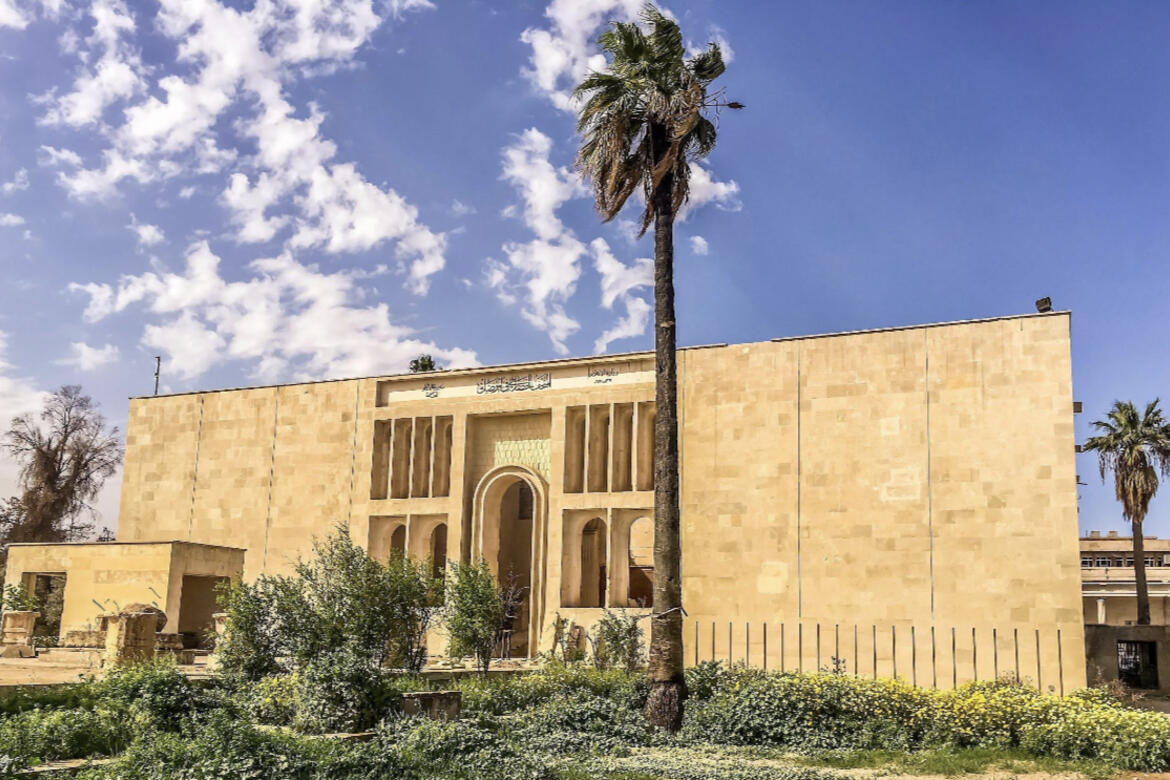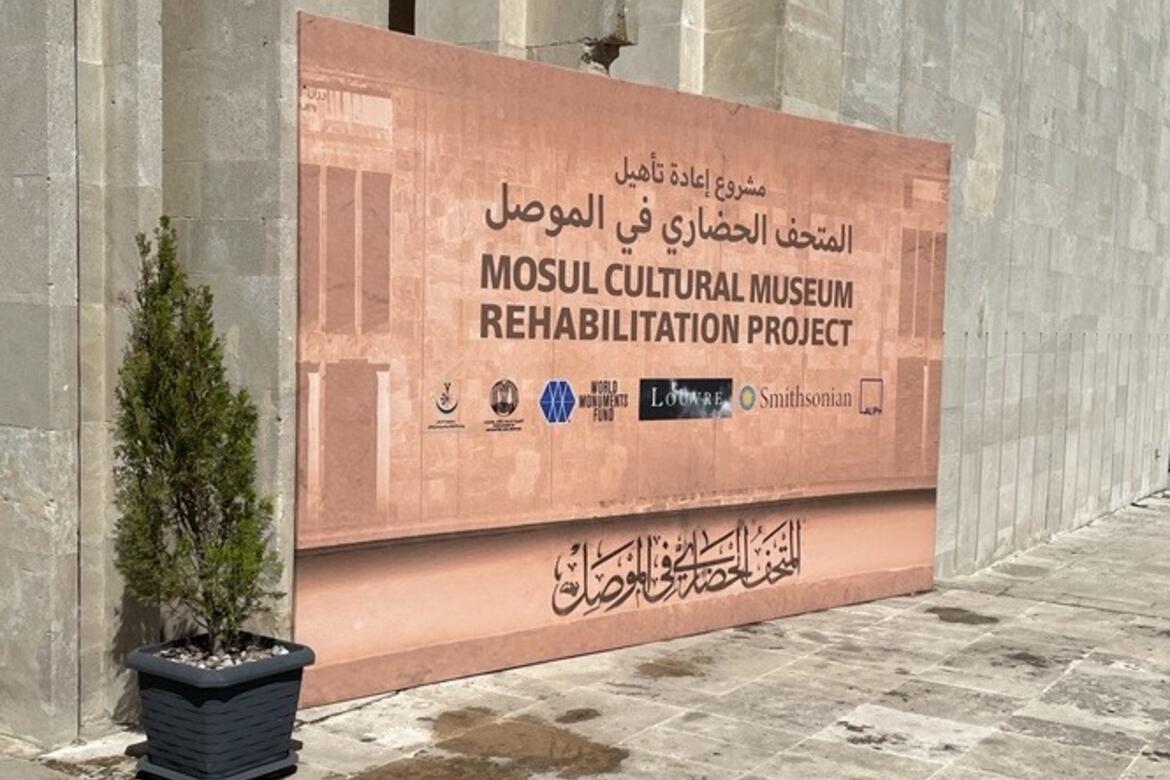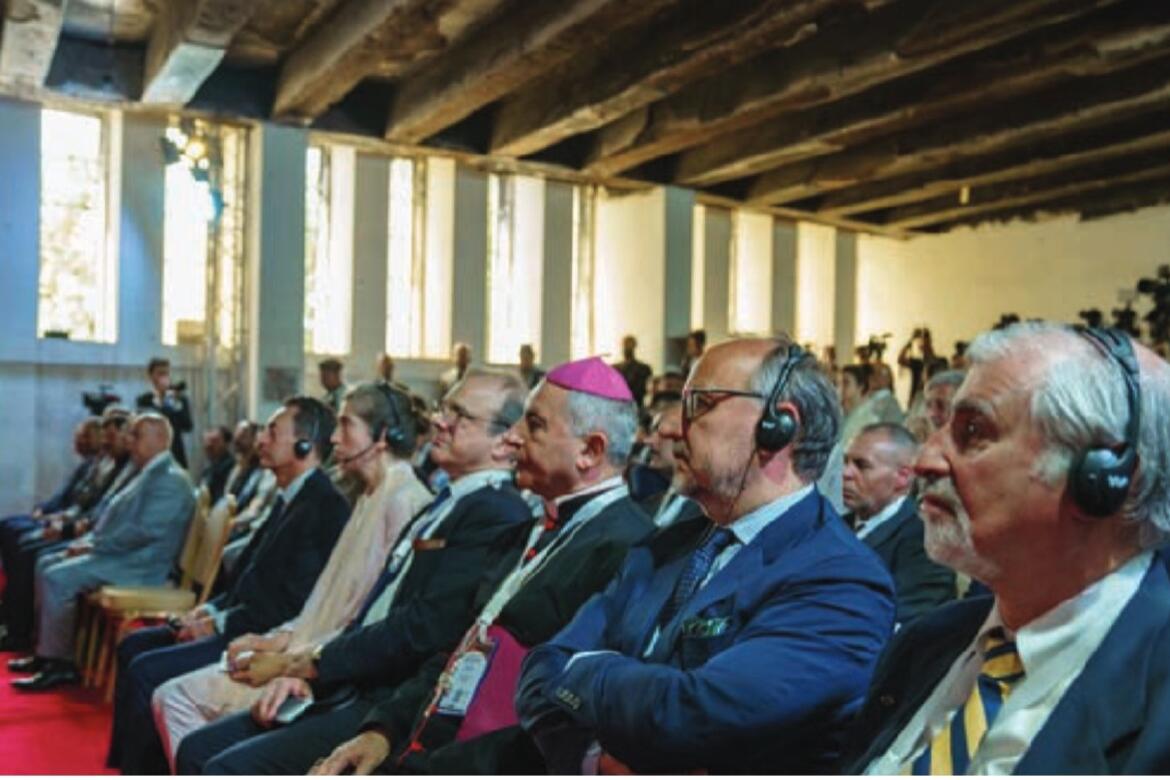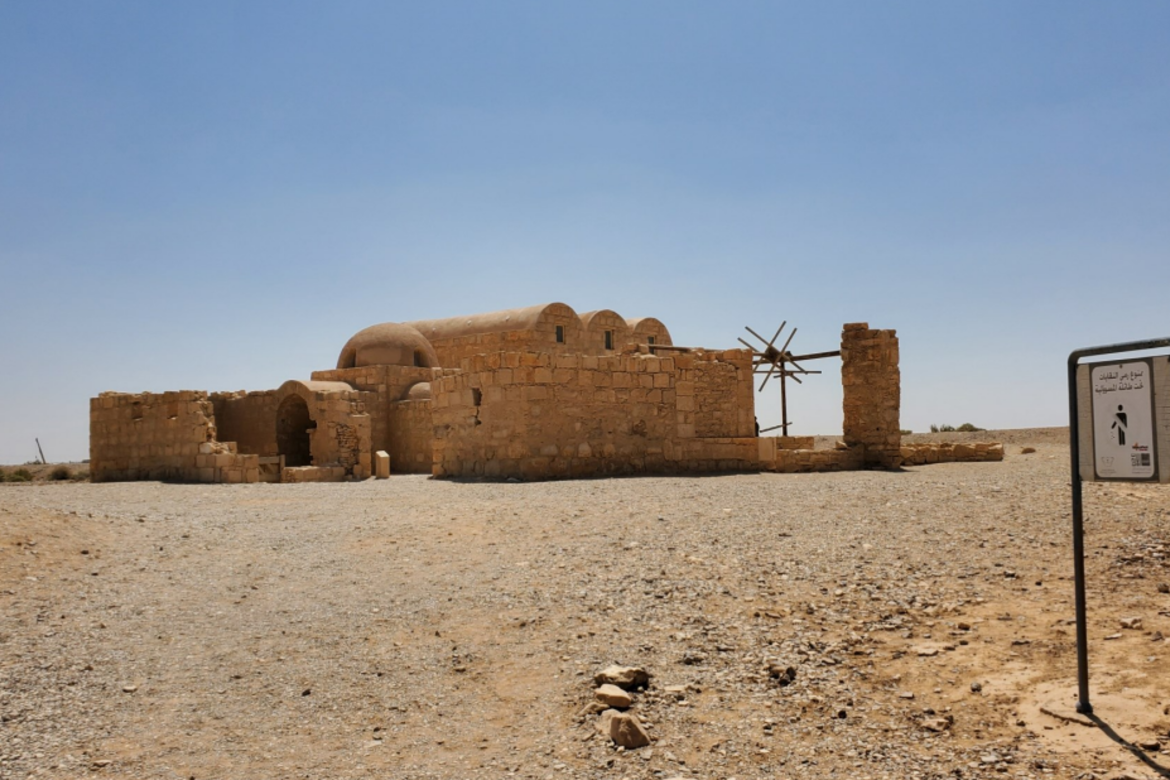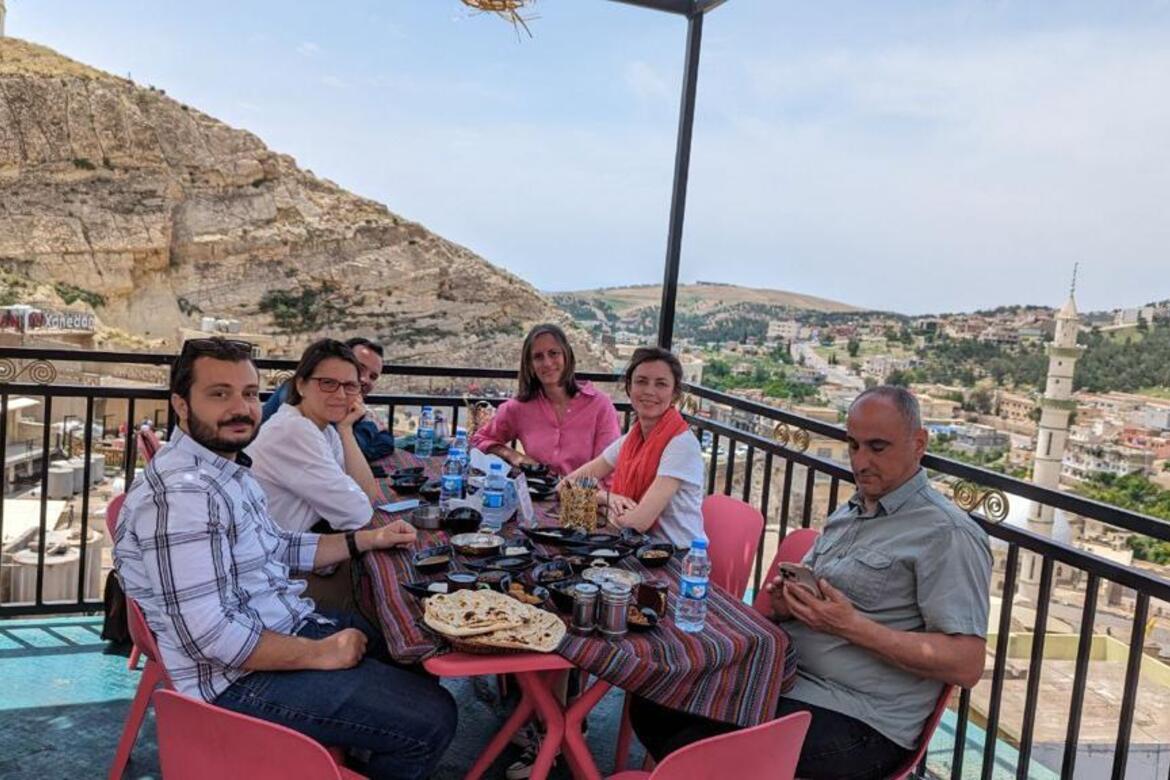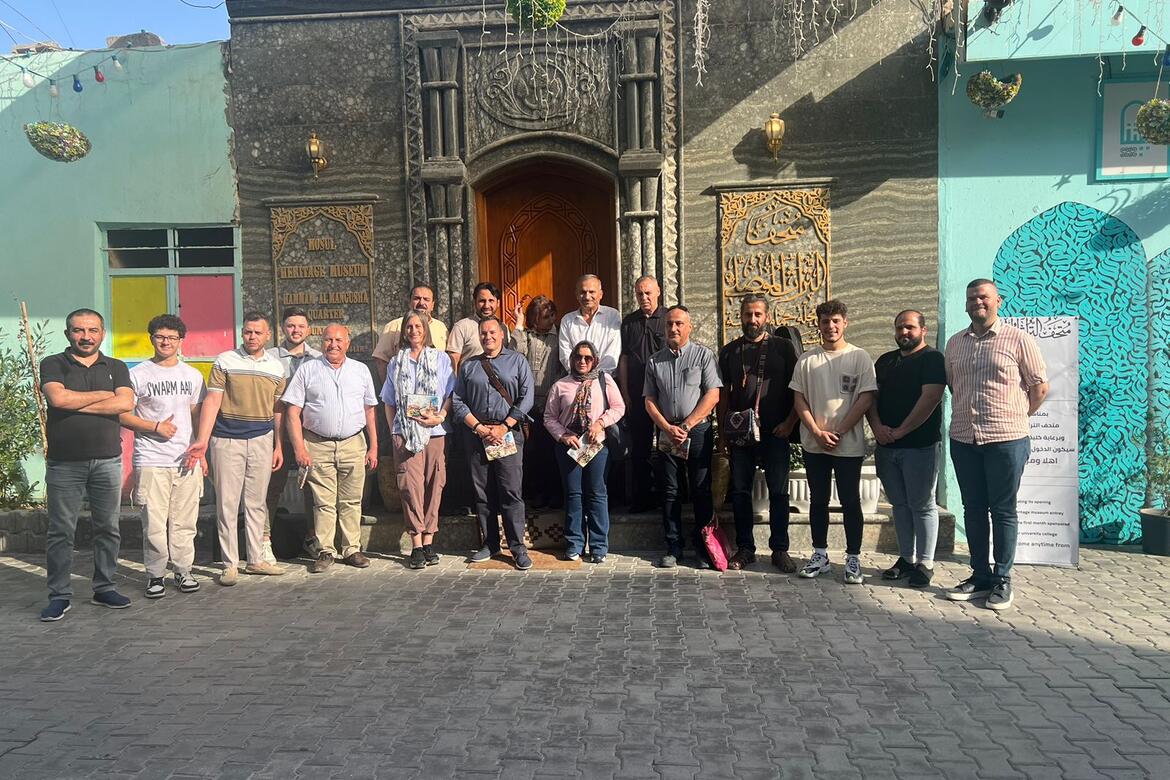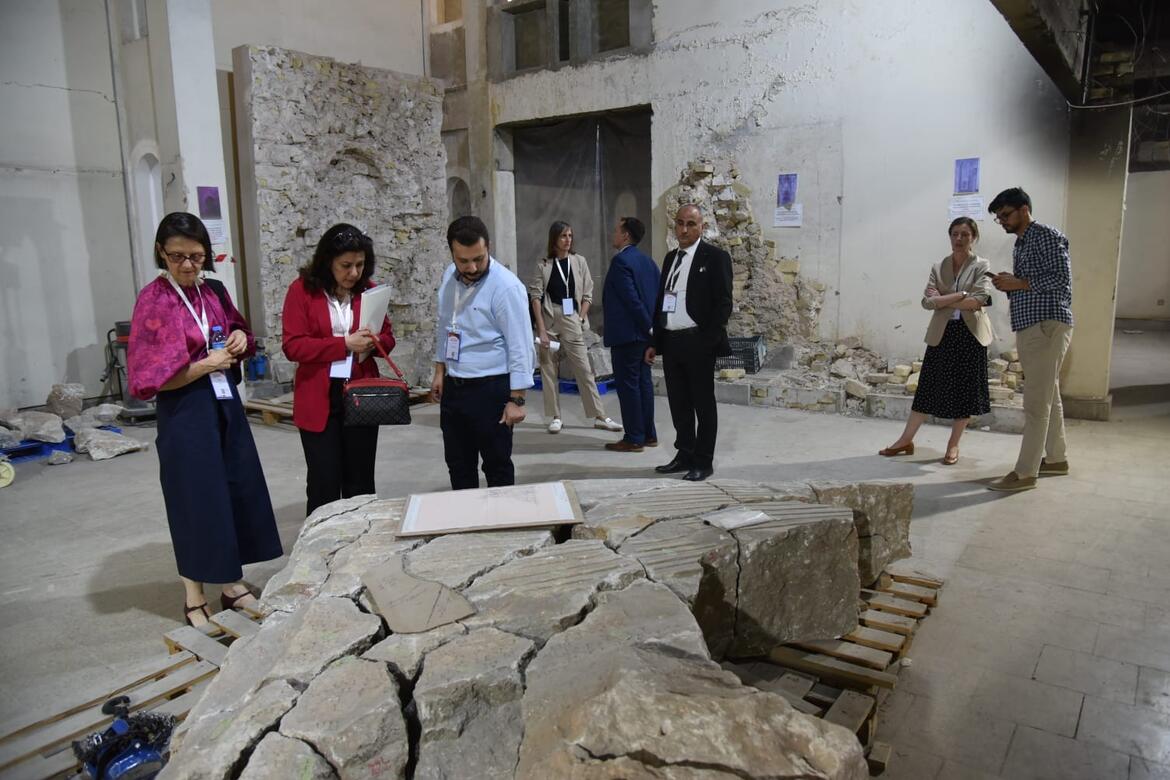Early Islamic Murals and Iraqi Modernism: Our Latest Travelogue
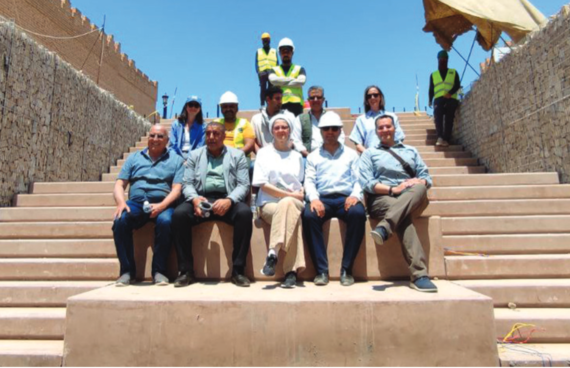
Crisis response has been a major theme in World Monuments Fund’s (WMF) work since the organization’s founding, and my recent trip to Iraq and Jordan was further evidence of the role heritage plays in regions dealing with post-crisis situations. From fostering a renewed identity and sense of belonging in Mosul after years of occupation by Daesh (also known as ISIS) to protecting ancient cities in the aftermath of the 2003 invasion, our work in the region supports social and economic renewal.
The main objective of my trip to Iraq was to take part in a press conference at the Mosul Cultural Museum (MCM), where the reconstruction of the museum building was inaugurated eight years after Daesh released a video showing their assault on this beloved museum, the second largest in all of Iraq. Working alongside the Iraqi State Board of Antiquities and Heritage (SBAH), the Musée du Louvre, the Smithsonian Institution, and the International alliance for the protection of heritage in conflict areas (ALIPH), WMF has focused on project planning and community outreach. For the next phase, we will be leading the restoration and rehabilitation of the damaged building, an important work by the Iraqi modernist architect Mohamed Makiya. The well-attended press conference garnered international coverage of the project, including in outlets like CNN, The Art Newspaper, The National, and the BBC. For more information on the future of the MCM and WMF’s involvement there, you can read our press release.
In addition to Mosul, my colleagues and I were able to review progress at the Erbil Citadel, where WMF is working with the High Commission for the Erbil Citadel Revitalization (HCECR) to create a Children’s Interpretation Center (CIC) and rehabilitate an eighteenth-century hammam with support from U.S. Embassy in Baghdad. These two projects contribute to the revitalization of one of the oldest human settlements in the world. During our visit, we took a look at some of the activities that will be in store for young visitors at the CIC, including a three-dimensional model of the Citadel and a comic book in Kurdish, Arabic, and English.
No survey of WMF’s work in Iraq would be complete without mentioning Babylon, one of our Signature Projects, where we have been engaged at multiple structures since 2007. At the iconic Ishtar Gate, work is proceeding quickly, with completion of a substantial retaining wall slated for the summer of 2023. Replacing an earlier cement path with a new elevated walkway will help address trapped moisture and minimize the impact of visitors on the archaeology below.
After my time in Iraq, I made a brief stop in Jordan to review our work at Qusayr ‘Amra, whose rich and unparalleled eighth-century CE murals earned it UNESCO World Heritage status. In partnership with Italy's Istituto Centrale per il Restauro (ICR) and the Department of Antiquities of Jordan, WMF has been working to conserve these unique paintings while providing Jordanian conservators, masons, and students with key hands-on experience.
Ambassadors Fund for Cultural Preservation, WMF has been working to conserve these unique paintings while providing Jordanian conservators, masons, and students with key hands-on experience. Since the site’s inclusion on the World Monuments Watch in 2008, the removal of harmful shellac and the discovery of new details and vibrant colors has restored the paintings to their original brilliance, shedding light on life and artistry in the early Islamic world. In a meeting at the Jordanian Department of Antiquities, Prof. Fadi Abdullah Bala’awi, the Director General, told us that the Qusayr ‘Amra project was a great success and set a new standard for preservation in the country.
I’m especially grateful for the aid and expertise of Alessandra Peruzzetto, WMF’s Regional Director for the Middle East and North Africa, who accompanied me on this trip and without whose leadership these projects would not have been possible. It was a privilege to connect with partners at each site and experience firsthand the impact of our work.
Learn More
World Monuments Fund safeguards cultural heritage around the globe, ensuring our treasured places are preserved for present and future generations.
Sign up for our newsletter to receive regular updates on our projects, stories from the field, upcoming events, and more!
![]()
World Monuments Fund’s work at the Mosul Cultural Museum, Iraq is made possible, in part, by ALIPH.

